The Black-footed Albatross (Phoebastria nigripes) is a magnificent seabird renowned for its remarkable oceanic prowess and striking appearance.
Belonging to the family Diomedeidae, this species is characterized by its large size, distinctive black feet, and impressive wingspan, which can reach up to 7 feet (2.1 meters).
These albatrosses have predominantly dark plumage with white underparts and a light patch around the eyes. They are primarily found in the North Pacific Ocean, particularly in the waters surrounding Hawaii and Japan, where they breed on remote islands and atolls.
Black-footed Albatrosses are highly adapted for life at sea, with the ability to travel vast distances over the open ocean in search of food.
Unfortunately, they face numerous threats, including habitat degradation, pollution, and bycatch in fisheries, making conservation efforts crucial for their survival.
Individualizing Criteria of Black-footed Albatross
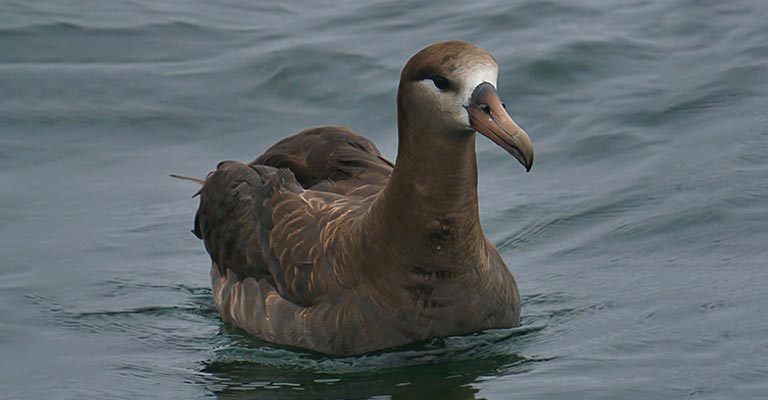
Identifying the Black-footed Albatross (Phoebastria nigripes) amidst the vast expanse of the ocean requires keen observation and attention to specific characteristics.
Here are eight key points to help differentiate this magnificent seabird:
Distinctive Black Feet
As the name suggests, one of the most prominent features of the Black-footed Albatross is its jet-black feet.
These contrast starkly against its predominantly dark plumage, making them easily identifiable, especially when the bird is in flight or resting on the water’s surface.
Dark Plumage with White Underparts
Black-footed Albatrosses typically exhibit dark brown to black plumage on their upperparts, including their wings and back, while their underparts, including the belly and underwings, are predominantly white.
This striking color contrast aids in identification, particularly from a distance.
Light Patch Around the Eyes
Another distinguishing feature is the presence of a light-colored patch around the eyes, contrasting with the dark plumage. This eye-catching feature helps to draw attention to the bird’s face and can aid in quick visual identification.
Large Size and Impressive Wingspan
Black-footed Albatrosses are among the largest seabirds, with an imposing size and impressive wingspan that can reach up to 7 feet (2.1 meters).
This immense wingspan, combined with their graceful gliding flight, sets them apart from other seabird species.
Long, Narrow Wings
Their wings are long and narrow, ideally suited for efficient soaring over the open ocean for extended periods without flapping.
This distinctive wing shape and their buoyant flight distinguish them from other bird species commonly found in marine environments.
Glide and Soar Flight Pattern
When flying, Black-footed Albatrosses exhibit a characteristic glide and soar flight pattern, rarely flapping their wings.
Instead, they utilize air currents and updrafts to effortlessly traverse vast distances across the ocean, making them a spectacle to behold.
Breeding Colonies on Remote Islands
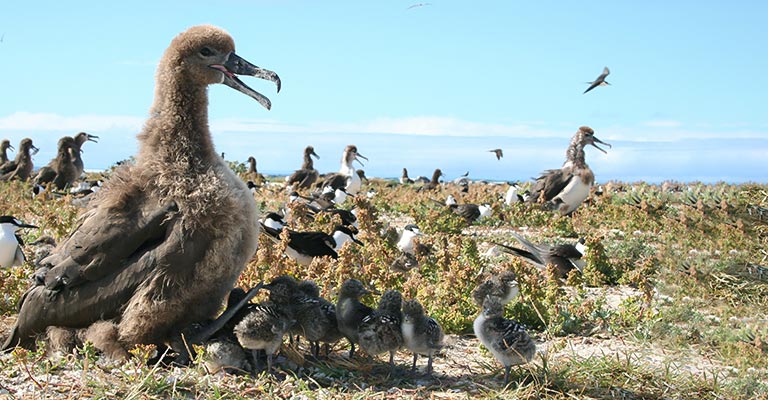
During the breeding season, Black-footed Albatrosses congregate in colonies on remote islands and atolls, primarily in the North Pacific Ocean.
These breeding sites, often located far from human habitation, serve as crucial habitats for the species’ reproductive success.
Vocalizations
While not as visually striking as physical features, the vocalizations of Black-footed Albatrosses can also aid in identification.
They produce a variety of calls, including soft whistles, groans, and bill clattering, which can be heard within breeding colonies or during interactions with other individuals at sea.
By paying attention to these critical characteristics, birdwatchers and researchers can reliably identify the Black-footed Albatross in its natural habitat, contributing to our understanding and conservation efforts for this remarkable seabird species.
Taxonomy of Black-footed Albatross
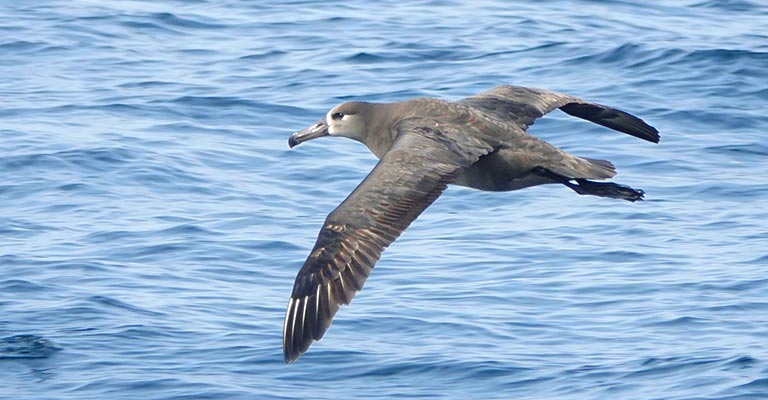
Below is the table detailing the taxonomy of the Black-footed Albatross:
| Taxonomic Rank | Classification |
| Domain | Eukaryota |
| Kingdom | Animalia |
| Phylum | Chordata |
| Class | Aves |
| Order | Phaethontiformes |
| Family | Diomedeidae |
| Genus | Phoebastria |
| Species | P. nigripes |
The Black-footed Albatross (Phoebastria nigripes) belongs to the family Diomedeidae, which includes the most giant flying birds. Within this family, it is classified under the genus Phoebastria, which comprises several other albatross species.
Albatrosses are part of the order Procellariiformes, commonly known as tube-nosed seabirds, which also includes petrels, shearwaters, and storm-petrels.
Procellariiformes are characterized by their specialized nasal passages, which help them sense odors to locate food at sea.
This order is further divided into several families, with the Diomedeidae family being distinctive for its large size, long wings, and remarkable oceanic range.
Common Food of Black-footed Albatross
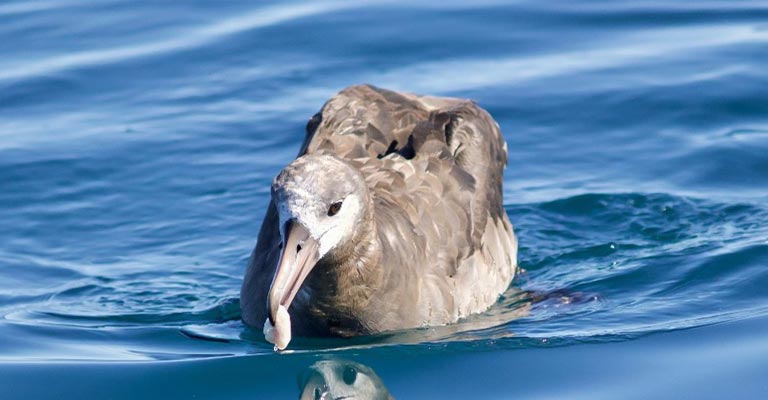
The Black-footed Albatross (Phoebastria nigripes) is primarily a scavenger and opportunist when it comes to feeding, relying on a variety of marine organisms for sustenance. Their common food habits include:
- Fish: Black-footed Albatrosses often feed on small fish species, such as flying fish, squid, and lanternfish, which they catch by surface-seizing or surface-diving.
- Crustaceans: They also consume crustaceans like krill and shrimp, which are abundant in the oceanic regions they inhabit.
- Cephalopods: Squid and octopus are significant components of their diet, and these birds are adept at capturing them either near the surface or through shallow dives.
- Carrion: As scavengers, Black-footed Albatrosses readily consume carrion and offal, including remains of fish and other animals floating on the water’s surface.
- Marine Debris: Unfortunately, they may also mistakenly ingest marine debris, such as plastic fragments, mistaking them for food, which poses a significant threat to their health and survival.
Black-footed Albatross Life History
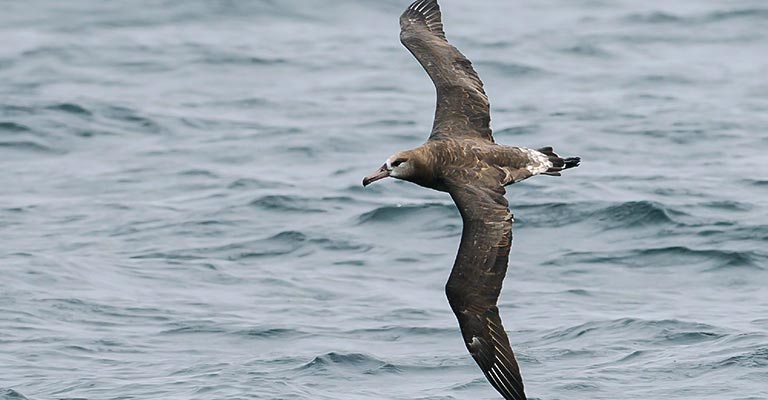
The Black-footed Albatross (Phoebastria nigripes) is a remarkable seabird renowned for its oceanic prowess and striking appearance.
This species exhibits a fascinating life history, characterized by its hunting habits, habitat preferences, nesting behavior, breeding biology, susceptibility to diseases, treatment options, and ongoing conservation efforts.
Hunting Habit
Black-footed Albatrosses are opportunistic feeders, primarily scavenging for food over vast expanses of ocean.
They prey on marine organisms, including fish, crustaceans, cephalopods, and carrion. Unfortunately, they are also prone to ingesting marine debris, mistaking it for food, which poses significant threats to their health.
Habitat and Range Map
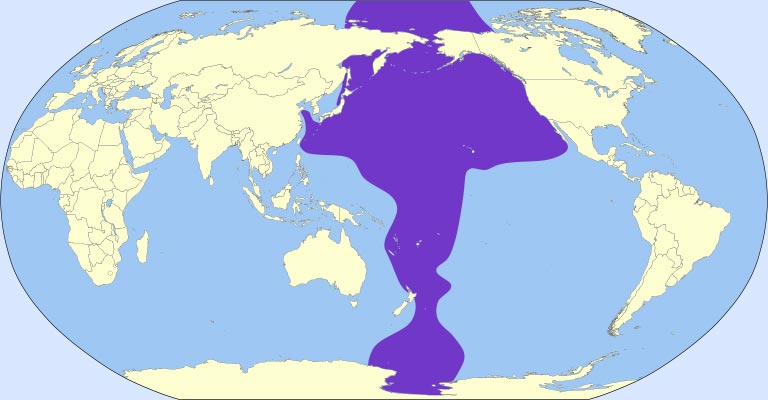
These seabirds inhabit the North Pacific Ocean, particularly around Hawaii and Japan, where they breed on remote islands and atolls.
Their range map extends across vast oceanic regions, where they forage for food and engage in long-distance migrations.
Nesting
Black-footed Albatrosses form breeding colonies on isolated islands, often in dense vegetation or on barren volcanic slopes.
They construct simple nests using grass, vegetation, and soil, where they lay a single egg per breeding season. Both parents participate in incubating the egg and caring for the chick until it fledges.
| Nesting Details | Facts |
| Clutch Size | Usually 1 egg per breeding season |
| Number of Broods | Typically 1 per breeding season |
| Egg Length | Approximately 3.5 inches (8.9 cm) |
| Egg Width | Approximately 2.2 inches (5.6 cm) |
| Incubation Period | Around 65 days |
| Nestling Period | Approximately 160 days |
| Egg Description | Large, oval-shaped, creamy white with occasional reddish-brown spots |
| Nest Description | Simple scrape in sandy or vegetated areas, sometimes lined with grass or vegetation |
| Parental Care | Both parents participate in incubation and chick rearing |
| Chick Feeding Strategy | Regurgitation of partially digested food by parents |
Diseases and Treatment
Like many seabird species, Black-footed Albatrosses are susceptible to various diseases, including avian pox and aspergillosis.
Treatment options often involve supportive care, including hydration, nutrition, and, in severe cases, antifungal or antiviral medications administered by wildlife rehabilitation experts.
Conservation
Conservation efforts for the Black-footed Albatross focus on mitigating threats such as habitat degradation, marine pollution, overfishing, bycatch in fisheries, and climate change impacts.
Initiatives include habitat restoration, marine debris cleanup, sustainable fisheries management, and international agreements to protect critical breeding and foraging areas.
Overall, understanding the life history of the Black-footed Albatross is crucial for implementing effective conservation strategies aimed at ensuring the long-term survival of this iconic seabird species.
10 Fun Facts About Black-footed Albatross
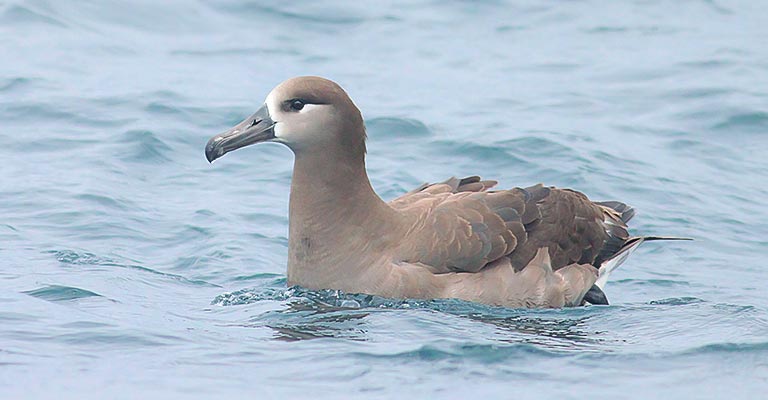
The Black-footed Albatross (Phoebastria nigripes) is a fascinating seabird with unique characteristics and behaviors. Here are 10 fun facts about this remarkable avian species:
- Longevity: Black-footed Albatrosses are known for their impressive lifespan, with some individuals surviving for over 50 years in the wild. This longevity is essential for their reproductive success, as they may not breed until they are several years old.
- Mating Rituals: During courtship, these birds engage in intricate mating rituals, including sky-pointing displays, bill clapping, and synchronized dancing. These displays help pair bond formation and reinforce the bond between mates.
- Monogamous Bonds: Once paired, Black-footed Albatrosses typically form long-lasting monogamous bonds, returning to the same mate year after year to breed.
- Colonial Nesting: Black-footed Albatrosses nest in large colonies on remote islands and atolls, often in dense vegetation or on barren volcanic slopes. These colonies can consist of thousands of individuals, creating a cacophony of calls and activity during the breeding season.
- Oceanic Wanderers: With their immense wingspan and efficient gliding flight, Black-footed Albatrosses are skilled oceanic wanderers, capable of traveling vast distances over the open ocean in search of food.
- Feeding Habits: While primarily scavengers, Black-footed Albatrosses are also adept fishers, using their keen eyesight to spot prey near the ocean’s surface. They feed on a variety of marine organisms, including fish, squid, crustaceans, and carrion.
- Global Distribution: Although they breed primarily in the North Pacific Ocean, Black-footed Albatrosses have a wide-ranging distribution, with individuals sighted as far north as Alaska and south as New Zealand.
- Conservation Challenges: Like many seabird species, Black-footed Albatrosses face numerous conservation challenges, including habitat degradation, marine pollution, bycatch in fisheries, and climate change impacts.
- International Protection: Efforts to conserve Black-footed Albatross populations are underway, including the designation of protected breeding sites and the implementation of measures to reduce bycatch in commercial fisheries.
- Iconic Symbol: Black-footed Albatrosses are not only important ecologically but also culturally significant, serving as iconic symbols of the vast and remote oceanic realms they inhabit and the need for conservation of marine ecosystems.
Wrapping Up
The Black-footed Albatross is a testament to the awe-inspiring diversity and resilience of marine life.
From their majestic soaring flights over the open ocean to their intricate mating rituals and devoted parental care, these seabirds captivate both scientists and admirers alike.
However, amidst their remarkable abilities lies a story of conservation urgency as they face mounting threats from human activities and environmental degradation.
By understanding and appreciating the unique characteristics and behaviors of the Black-footed Albatross, we can strive to protect not only this iconic species but also the delicate ecosystems they inhabit.
Together, we can ensure a brighter future for these magnificent oceanic wanderers.